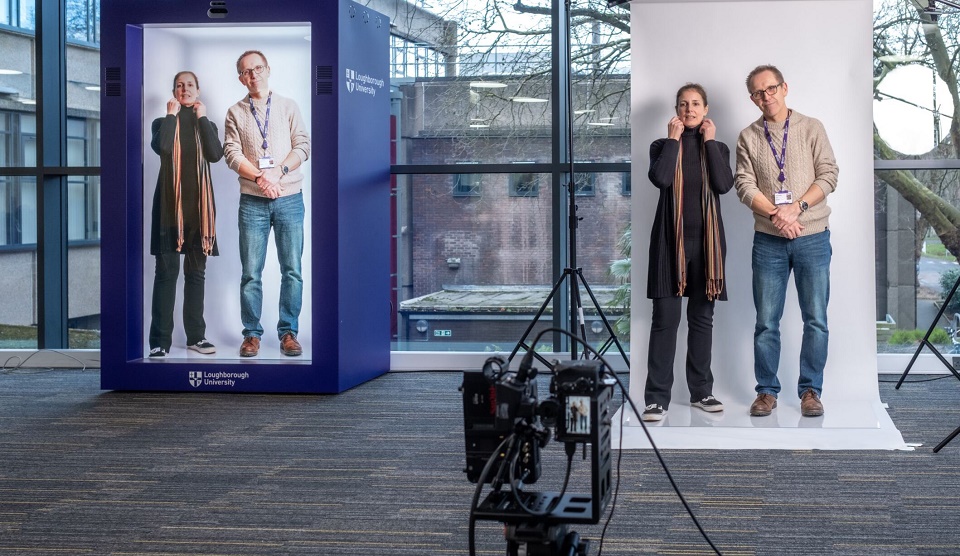
UK University Testing Big Hologram-ish Displays For Remote Guest Lectures
January 24, 2024 by Dave Haynes
I have my doubts about some of the retail and consumer being floated by the companies who make and market those big, shower stall-sized transparent LCD displays marketed as holographic, but I can definitely buy into this plan by a UK university to enable guest lectures by people unable to physically get to the school.
Loughborough University says it is set to become the first higher education institution in Europe to host guest lecturers in this way, using one of the displays from the LA firm Proto.
The university, in Leicestershire, will formally introduce the technology into the curriculum in 2025, after a year of experimentation.
The device enables live beaming from anywhere in the world for real-time, interactive learning experiences – expanding options for teaching and research while reducing its carbon impact.
Using Proto, Loughborough is now able to live-beam guest speakers from global universities and industry into lectures to give talks and answer students’ questions, just as if they were in the room together. This gives students and staff access to professionals who they may otherwise not have the chance to engage with.
In addition, the technology will be used for presenting 3D digital objects for closer inspection – for instance for engineering, architecture, design and sports science classes – where they can be rotated and studied in detail. Similarly, students will be able to showcase their own outputs – such as product designs or fashion shows – to broader audiences.
The unit will also be used to present pre-recorded messages and talks from industry partners and distinguished alumni, and using Proto’s industry-first AI hologram avatar capability, to provide interactive guidance and information for prospective students, their parents and guardians during events such as university open days.
“This new technology will enhance the learning experiences of our students, enabling us to offer more interaction with external guests, particularly those based overseas,” Professor Rachel Thomson, the University’s Pro Vice-Chancellor for Education and Student Experience said. “We look forward to exploring just what is possible with the Proto hologram technology.”
“Education has always been a key use case as we developed the Proto platform,” said David Nussbaum, Inventor and CEO of Proto Inc. “And in Loughborough we have a perfect partner to show all the ways the technology can boost education, in an environmentally sound way, for the first time in the UK.”
The technology has been used at Harvard, Dartmouth, Hobart, Gallaudet, and the University of Central Florida.
A lot of the stuff touted for these transparent displays is all about the bling. Given the displays cost a LOT of money, I’m not sure an ROI model for product or event marketing comes together well.
But this sort of thing makes sense – enabling an MIT prof to allocate 60-90 minutes to be captured in front of a white screen, instead of needing three or four days to fly to England and back.
Broken record time: it’s not a hologram. It’s a transparent LCD that uses enhanced lighting, shadows and clever video capture to create the illusion of depth. But the display surface itself is not three-dimensional.



Excuse me for being stodgy, but what question was asked that this is answering? I mean, I get the novelty might be a factor in out of home attention getting, but for lectures? Students need access in person or remotely to the people that will educate and guide them. Got it. They need to be able to focus on and comprehend the content. How does a distracting gimmick aid this? Even instructors just want to do their jobs transparently of the technology or not need to go to a special studio to do what not. Also, how is your Alma Mater’s budget these days? Are they looking for pointless toys to spend on? (don’t answer that, we all know they will just build a new football stadium).
Some of you here may be old enough to remember playing with walkie-talkies. You and a friend would walk away from each other asking “Can you here me now? Can you hear me now? Can you hear me now?” That’s some fine communication.